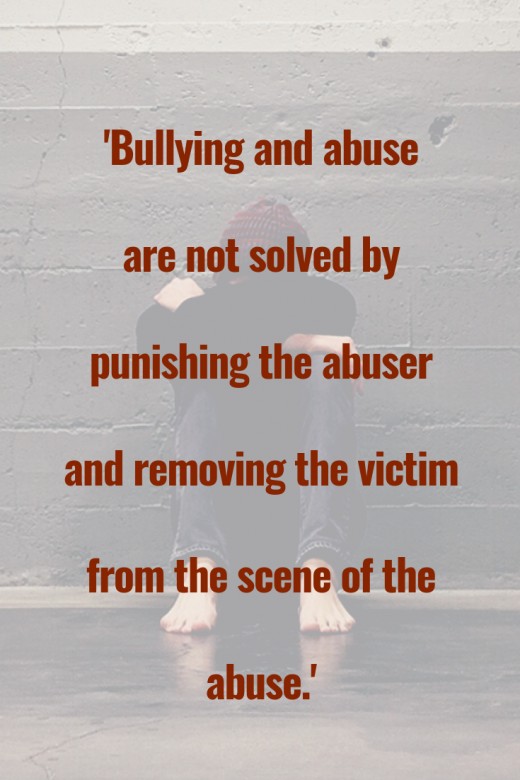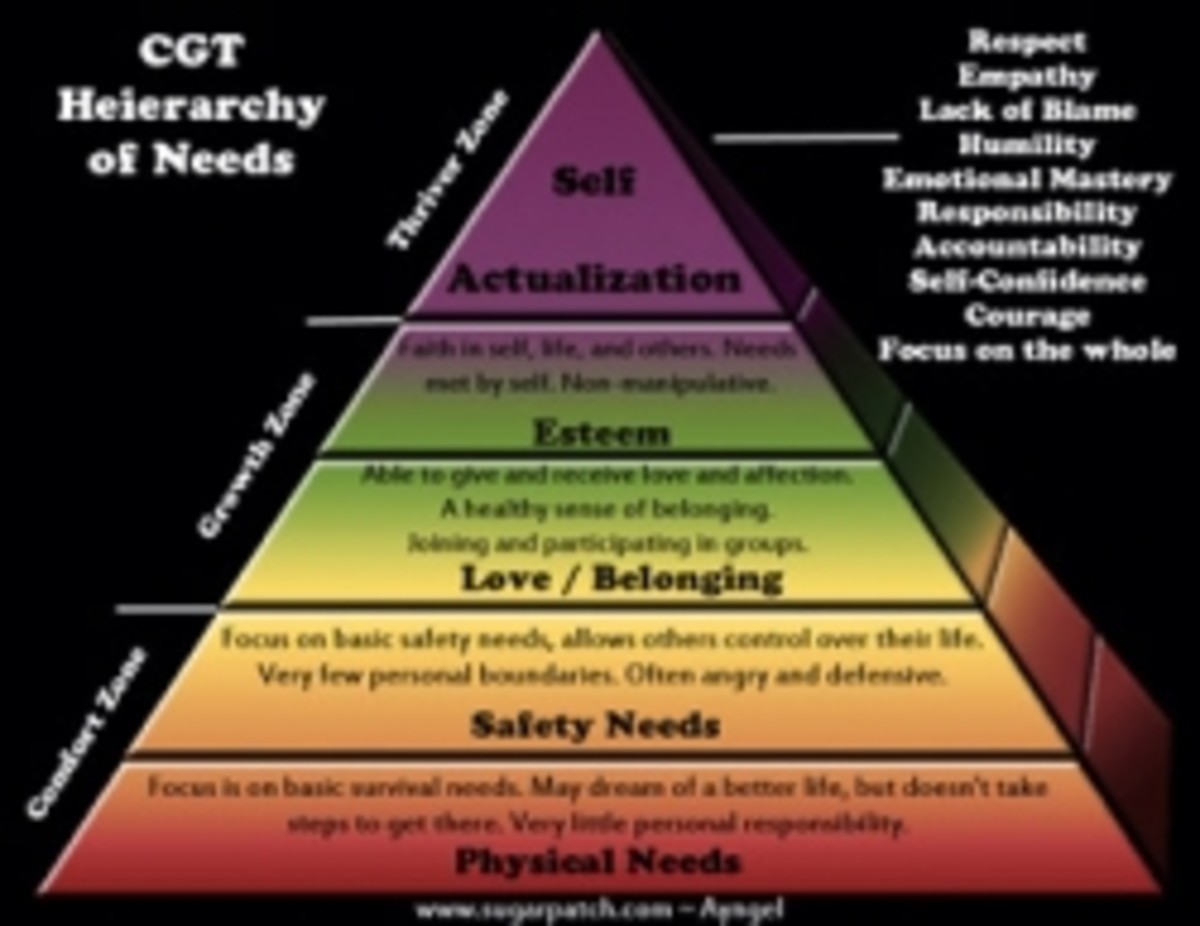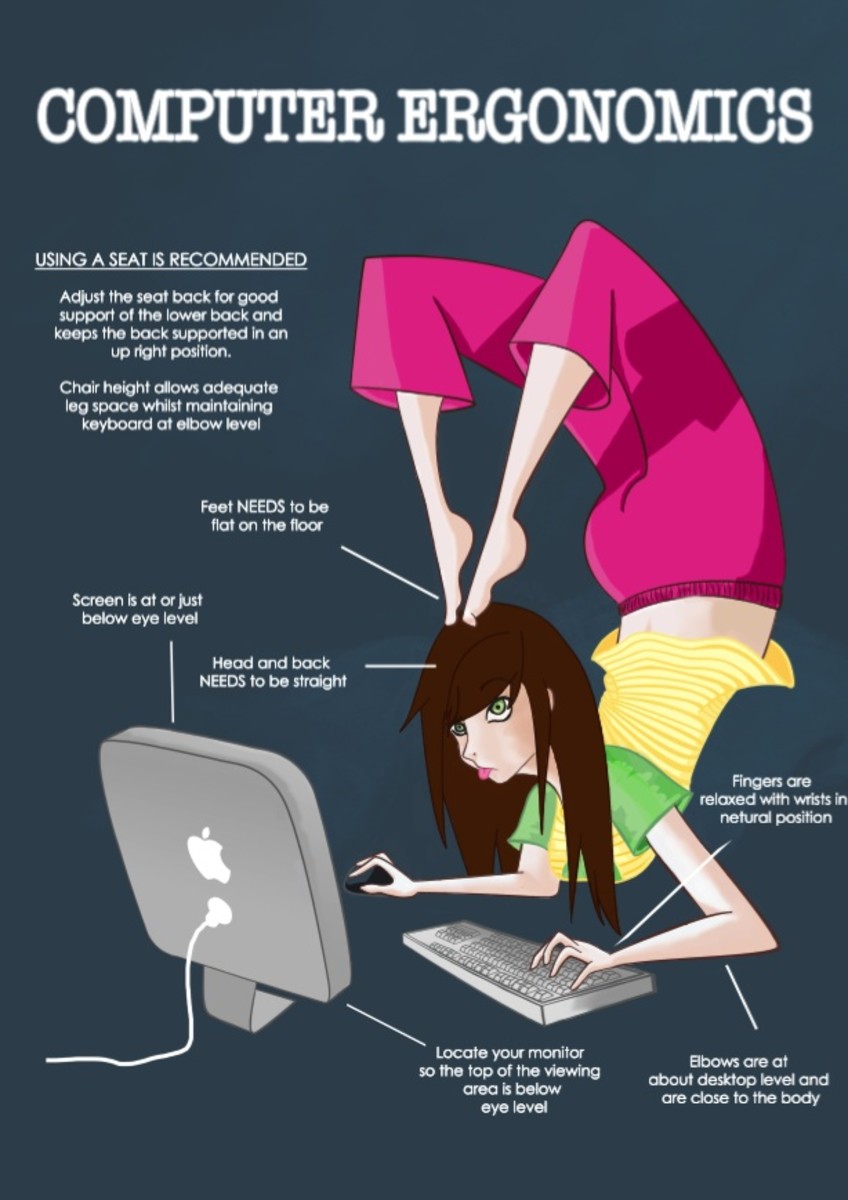Handling Bullying or Abuse
Most victims believe that they deserve what's happening to them.
Bullying is not solved by punishing the abuser and removing the victim from the scene of the abuse. Deeper work needs to be done to guarantee that the abuser doesn't go looking for new targets and the victim doesn't fall into the same trap again.
Creating beliefs
Something happens. The human being looks at the situation and interprets it based on previous experiences. Then something similar happens again and the human being interprets it like before. If that kind of situation is repeated enough times, the human being will often confirm the interpretation and end up taking it as "this is the way things are." The first time the situation happens, the interpretation might be based on something apparently unimportant, a comment, a circumstance, even a movie or a book. But then, once the seed is planted, the belief starts taking root and becoming stronger with each confirmation. That is one way in which beliefs are created.
Everyone involved in bullying or abuse of any kind is a victim of their own beliefs.
The other way has to do with emotions. When something causes a very strong emotion in us, be it positive or negative, that emotion can be strong enough to establish a new interpretation in our minds. Let's take the example of a near-death experience, an accident or a serious illness. How many people change their beliefs because of something like that?
Sometimes the interpretation confirms an already existing belief, which is then strengthened and reaffirmed, like a building block being placed on top of an earlier one, making the structure more solid and sturdier.
Read my previous article, Stop Punishing the Bully! for an introduction to the topic.
Let's now imagine a bullying situation, or any other kind of abuse for that matter. Everyone involved has their own beliefs growing stronger day after day. The bully harasses the victim and the witnesses watch. All the characters in this plot have their own beliefs guiding their actions.
Common Victim Beliefs
Most victims believe that they somehow deserve what's happening to them. When an abuser abuses them, they justify it in their minds, thinking things like... 'Yeah, I shouldn't have done that.' 'I don't deserve any better.' 'If only I could do things that way.' 'There's no way out; I am the weird one.' As a result of their previous experiences, they end up believing that they are at fault or that the situation is their fate. Which is why they can rarely defend themselves from their abusers: they think it's the way things are.
Abuse often starts in childhood. Many of those abused later already started developing this victim mentality in their early years by interpreting situations at home or at school. Abusers and victims were normal roles played by those in their surroundings. When they finally encounter their first abuser, their belief system is ripe to accept that view of themselves. Thus, children raised in environments in which abuse is common, are more likely to become victims or abusers than other children who grow up in environments without that kind of behavior.
Victims grow into victimhood. At the beginning, when the abuse is still mild, they start questioning their original beliefs... 'Could it be true that I am what this person is saying? Could I truly be like that?' When those original beliefs are shaken, the abuser increases the intensity of the attacks and the victim thus confirms the new interpretation. That is the reason why most abuse usually starts with verbal or psychological attacks; so that the victim's original beliefs, which act as defence mechanisms, are weakened and the abuser can move on to harder techniques.
Victimhood is also a self-fulfilling prophecy. Victims, when already believing their role, will indadvertedly attract abusers. For example, victims immediately change their physical posture upon meeting their abusers or other possible ones, adopting a victim attitude they might not be even aware of. A bullied child, for example, might cringe or try and hide while looking down whenever a bully or other possible bullies enter the child's space. The abuser will immediately perceive those invisible signs and identify and use that child as a possible victim if needed. Thus, the underlying beliefs of the victim end up confirming themselves over and over again.
Common Witness Beliefs
Something happens. Witnesses look and do nothing. What are they thinking? Many of them will be telling themselves, 'better them than me,' 'I don't want to attract anybody's attention,' or 'it's none of my business.' Some could even think something like, 'that person probably deserves it.' They justify their actions or lack of that way, so they can keep their peace of mind. Their beliefs offer them an excuse to do nothing about the situation. Fear, worry, self-righteousness or even a certain moral superiority are like this justified in the minds of the onlookers.

Abusers are also victims of their own beliefs.
Common Abuser Beliefs
'I need to be stronger and more popular to show the world that I am the best.' 'They're all going to see that I am in charge.' 'I will show the world that I am important.'
Most abusers crave respect and admiration. They believe that only by having them will others like them. Their actions are often focused on helping them shine or on helping them feel bigger, stronger, more powerful or mightier. They believe that others are there to serve them and support their growth. They don't even see their victims. Those other human beings are nothing but stepping stones on their way to glory.
Many abusers come from abusive environments and have abusive role models while growing up. The most important message they get is that being stronger and louder than others results in rewards. That is how beliefs such as, 'fortune favors the bold,' 'when the going gets tough, the tough gets going,' or 'if you want something done right, you have to do it yourself,' and other similar ones become their guiding principles.
Some others become abusers just for the opposite reason; because they don't want to be like the victims they see around them. To prevent being abused, they abuse others themselves. In this case, the underlying beliefs can be something like, 'weakness of attitude becomes weakness of character,' 'it's a sign of weakness just to let things happen' or 'big fish eat the small ones.' By believing this, they need to be stronger than others or else, they will fail. There is no other way in their minds.
How should bullying and abuse be tackled, then?
All kinds of abuse need to be tackled from every perspective to effectively disappear. If abusers are only punished, they will abuse again. If victims are sent away, they will encounter new abusers. If witnesses are not considered, they will react the same way in the future.
There are two ways in which this type of violence can be approached, and both need to be done by professionals who are trained in these techniques. When working with each of the persons involved in a violent situation or with all of them in a group, no judgement should be made and no opinion should be criticized. After all, many of our beliefs we are not even aware of and very few people know that they actively believe certain things. :
- One by one: working individually with the victim, the abuser and each of the witnesses, to help them first identify and then question and change their underlying, limiting beliefs. That is easier said than done, as people deeply believe their beliefs and can find many justifications and proof that their opinions are right and fair. Helping a person question beliefs is a slow, complex process than can cause insecurity, uncertainty and pain. But unless the underlying belief is changed, chances are that the same behavior will happen again. Many different tools can be used to help abusers, victims and witnesses; from coaching and mentoring to positive psychology, nlp and others. Some of the techniques that can be used to support those tools are roleplaying, story-telling, absolute forgiveness or mindful feeling, just to mention a few. A good professional will be able to use and apply a big variety of them, so as to choose the best approach with each individual.
- As a group: working with all those involved in aggressions or violence is something I only recommend when the professional in charge has a very wide experience, as the situation will combine the fear and insecurities of all of them. Story-telling, roleplaying, mindful feeling and the victim's chair are some of the techniques that can be experimented with in combination with personal development methodologies in order for those people to identify, question and change the beliefs that lead them to their specific behaviors.
If violent behavior is to be erased from our societies, a joint, common effort needs to be made to help all those involved change their beliefs. If a teacher observes that a child acts in an abusive way or displays victim attitudes, the whole group of peers should be considered, and not just the kids involved. Likewise, if there is a case of violence at home, not only should the perpetrator and the direct victim be worked with, but also any other members in the household.
No human being is born an abuser. No human being is born a victim. We learn to behave the way we do because we adopt certain beliefs that lead us into behaving that way. Every human being has the capacity to learn throughout life. If the beliefs we learned to have before serve us no more, new ones can be learned.
Enjoy life... ALL of it,
Jessica J. Lockhart
© 2018 Jessica J Lockhart







